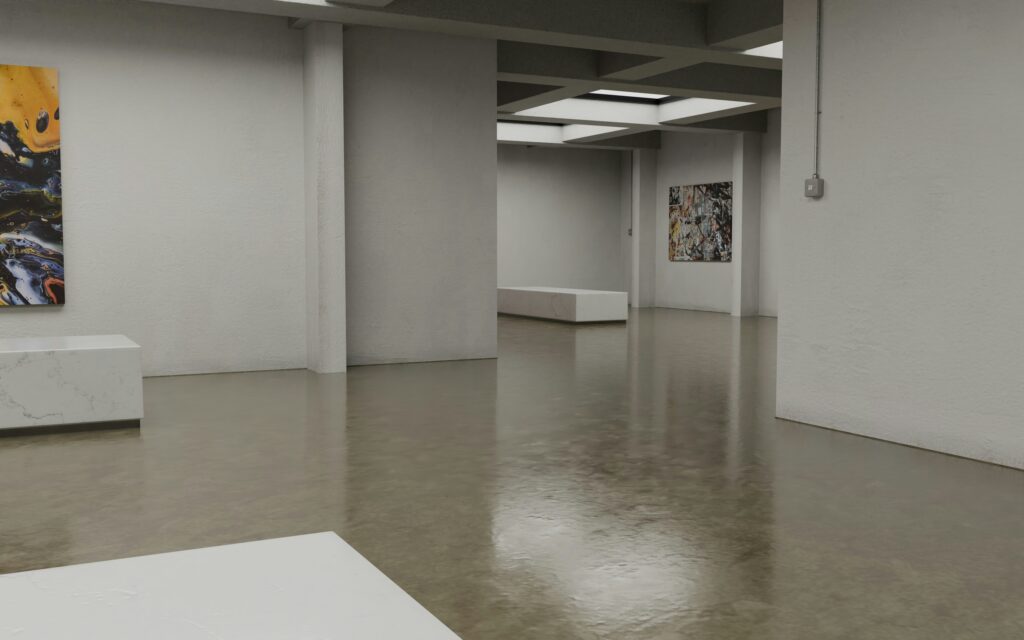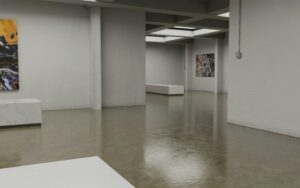When you walk into a business, whether it’s an office, school, medical facility, or factory, the condition of the floors may not be the first thing you notice. But maybe it should be. Dirty floors don’t just look messy. They can pose real health risks for both customers and employees. For a company like Bee Line, that offers commercial cleaning, janitorial and deep-cleaning services, it’s an issue worth paying careful attention to.
Why dirty floors matter
Floors endure a lot: constant foot traffic, shoes carrying in outside dirt, spilled liquids, dust, and debris. Over time, that buildup can lead to several potential problems:
- Pathogen and allergen buildup.
Floors are one of the most trafficked surfaces in a building. Every step can transfer dirt, dust, microbes, allergens and even chemical residues. If floors are not cleaned regularly and thoroughly, these contaminants accumulate. When employees or visitors walk across them, they can stir particles into the air or carry them onto carpets, mats or other surfaces. - Microbes and infections.
While much focus in cleanliness is on countertops and door-handles, floors are often overlooked. Floor surfaces may harbor bacteria, viruses, fungi, or mold spores, especially in high-moisture or high-traffic areas. When these pathogens get on people’s shoes or are kicked up, they can potentially lead to illnesses or exacerbate conditions like asthma. - Slips, trips and falls = injuries.
Dirty floors may hide hazards like wet spills or uneven surfaces. When combined with poor cleaning, you heighten the risk of slip-and-fall injuries, a safety and health concern for employees and customers alike. - Impression and morale.
A floor that looks unclean gives an impression of neglect. For employees, that can signal “we don’t care about our workplace,” which can affect morale (and indirectly health). For customers, it may reduce trust and comfort, perhaps causing them to avoid the business, affecting operations and standards of service.
How does this connect with Bee Line’s work?
Bee Line specializes in professional commercial cleaning, offering services like janitorial, deep cleaning, disinfection, floor cleaning & project services.
Here are some specific ways Bee Line addresses dirty-floor risks:
- Floor cleaning & project services: Bee Line provides carpet cleaning, tile care, vinyl tile care, and other floor-care work.
- Medical-grade standards: Bee Line emphasizes a “medical-grade” cleaning approach even in non-medical buildings, meaning they bring rigorous infection-control protocols to all spaces.
- High-touch and audit systems: For janitorial services, Bee Line trains staff on high-touch points, uses fluorescent marking to audit their work, and tracks high-traffic cleaning zones.
By engaging a professional service like Bee Line, an organization can reduce the health risks associated with neglected floors and create a safer, more trustworthy environment.
The health risks of neglected floors
Let’s look a little more in-depth at how dirty floors can make people sick or increase their risk.
Allergens and respiratory problems.
Dust, dirt, mold spores and allergens accumulate on floors. Employees walking through these areas stir particles into the air, which can aggravate allergies and asthma. Suppose staff at a corporate office constantly breathe in dust stirred from the carpet or tile which may cause them to end up with more respiratory symptoms, sick days or reduced productivity.
Pathogen transmission.
While surface-to-hand transmission is often discussed (door handles, desks), floor surfaces also play a role: fluids from people (sneezes or spills), tracked in soil, or leakage from machines in industrial settings can carry germs. If floors are not cleaned or disinfected properly, these pathogens linger longer and may transfer to hands, shoes, or equipment.
Injuries and secondary effects.
A dirty floor can hide hazards. Wet spots, spills, and accumulated debris, which all may lead to slip, trip, and fall incidents. Even if these aren’t “illnesses,” injuries impact employee health and increase overall business liability.
Operational disruptions and morale.
When employees feel their environment isn’t clean or safe, stress increases. Clean, well-maintained floors signal that the company prioritizes their wellbeing. This sense of care creates a more positive environment, improving both productivity and workplace satisfaction.
What to look for: floor condition indicators
Business owners and facility managers should watch for the following signs that floors need more than a basic sweep:
- Visible dirt, scuff marks, or grease that regular cleaning hasn’t removed.
- High-traffic zones where the finish or cleanliness has noticeably deteriorated.
- Areas near entrances where outside soil is tracked in.
- Moisture, spills, or stains that remain unaddressed.
- Heavily soiled or discolored carpets indicating deep contamination. .
- Dull, scratched, or damaged tile or vinyl surfaces, which can trap additional dirt and bacteria.
- A lack of consistent deep floor care, such as buffing, scrubbing, sealing, or coating.
How Bee Line can help
If you partner with Bee Line for facility cleaning, here’s how they help mitigate the risks associated with dirty floors:
- Scheduled Floor Care: Regular carpet cleaning, tile and vinyl maintenance, and rapid-response floor-care services to address issues before they become safety hazards.
- Medical-Grade Protocols: Even non-medical environments receive rigorous cleaning protocols, ensuring infection prevention and readiness.
- Highly Trained Staff: Bee Line requires background & reference checks, ongoing training in high-touch cleaning, and onsite training at their Chicago headquarters.
- Robust Audit Systems: High-traffic zones are consistently monitored, supported by fluorescent marking tools and weekly quality reviews to ensure compliance and performance.
Choosing Bee Line means going beyond surface-level cleaning, addressing the underlying causes of floor-related health risks and ensuring a safer, more resilient facility.
A proactive strategy for healthier floors
For facilities aiming to reduce health risks and maintain safe,clean floors, here’s a simple and effective strategy:
- Assess high-traffic zones: Identify entryways, corridors, cafeterias, restrooms, and other areas that accumulate the most soil and movement.
- Establish regular cleaning cycles: A structured schedule of daily sweeping and mopping, weekly machine scrubs, and monthly or quarterly deep-cleans or re-coating.
- Use proper cleaning methods: Floors require more than a mop. Professional equipment and targeted cleaning agents remove embedded soil and extend floor life.
- Schedule emergency response: Address spills and other hazards immediately to prevent injuries, odors, and contamination.
- Audit your floor-health: Periodically inspect floors for hidden dirt, wear and tear, and gaps in cleaning performance.
- Partner with experts: A professional provider like Bee Line ensures standards are met, staff are well-trained, and your facility remains safe, compliant, and audit-ready.
The bottom line
Yes — dirty floors can make customers and employees sick, or at the very least increase the risk of illness, injury, or low morale. Maintaining clean, well-cared-for floors is a critical part of creating a safe and healthy environment.
For organizations committed to a clean workplace, a safe facility, and the wellbeing of employees and visitors, investing in professional floor care is essential. By partnering with Bee Line’s commercial cleaning and floor care services, you address more than just appearance; you protect health, safety, and your organization’s reputation.
FAQ
Q: Can dirty floors really cause illness?
A: Indirectly, yes. While the floor itself may not always be the direct source of illness, it can harbor allergens, microbes, and contaminants that contribute to respiratory issues, spread pathogens, or worsen hygiene conditions.
Q: How often should floors be professionally cleaned?
A: It depends on traffic levels, flooring type, and facility use. High-traffic areas may require weekly or monthly deep-cleaning, while daily cleaning should be standard. Partnering with a professional provider ensures the right frequency and methods are in place.
Q: What’s the difference between regular mopping and professional floor care?
A: Regular mopping removes surface dirt, but professional floor care reduces wear and microbial load significantly more.. It uses specialized equipment, such as carpet extraction machines, tile and vinyl care systems, and proper cleaning agents, combined with proven protocols for soil removal, disinfecting, and maintaining floor finishes.
Q: Are there specific risks for industrial or medical environments?
A: Yes. Industrial floors may harbor chemical residues, heavy soil, and higher slip hazards; medical or cleanroom facilities have higher infection-control standards. Bee Line’s industrial and healthcare cleaning services bring hospital-grade rigor to factory floors.
Q: How does a cleaning company like Bee Line ensure quality?
A: Bee Line uses background-checked and trained staff, conducts high-touch-point tracking, employs audit tools such as fluorescent marking, and maintains consistent cleaning protocols across all facilities to ensure reliability and accountability.
About The Author
Julio Alvarez
author
Julio is a true veteran to the industry, rising through the ranks of the cleaning business and finding a home at Bee Line since 2007. When he’s not busy expertly leading his troops, you can find Julio playing soccer and spending time with his wife, 3 adorable boys, and a goldfish named Flipper! He has a soft spot in his heart for stuffed pizza with salad, and is a Cubs fan through and through. His favorite part of working at Bee Line is the strong teamwork.




